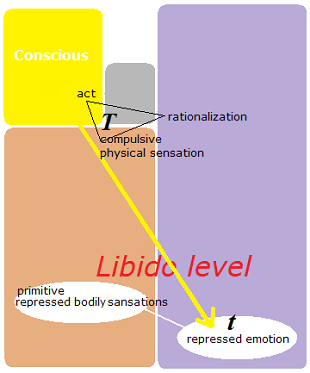The Kuriki method (the first edition in 2007) is a theory about Tourette’s syndrome (tic disorder) and obsessive-compulsive disorder to cure these diseases without medication. This theory is based on the author’s inference and interpretation regarding the structure of these diseases. Since it has been written for the psychoanalysts, reading will be difficult for people in general and it might be sometimes read erroneously. Therefore the Kuriki method must presuppose that the patient is treated by a nearby psychoanalyst, and that, between the patient and the Kuriki method, there is always the psychoanalyst. The explosion of emotional catharsis, which has strong repercussions, is done only for three seconds, once a week: beyond this rhythm, it would be an accident caused by negligence, and the psychoanalyst who is inexperienced in emotional catharsis must take responsibility for the temporary mental collapse caused by the accident. Also, to the patient who has weak capacity of logical reasoning, the psychoanalyst must explain well on the violent emotion of revenge caused by the illusory confusion between the person of the traumatic image in his head and the person in the real world.
Cure for Tourette’s syndrome (tic disorder) and OCD without medication
§29
Diagrams of awareness
As a cure of tic disorder, first, the patients must find the object of repression. Awareness of the repressed object (small t in the diagrams below). The objects of repression in the upper layer of tic disorder are disagreeable bodily sensations. The objects of repression in the lower layer of tic disorder is the emotion of a libidinal trauma. Traumatic emotion is the expression of the disagreeable judgment, which has been frozen behind the traumatic image. The less repressed objects, the less appearances of « compulsive intramuscular sensation » of tic disorder.
Secondly the correction of the manner of repression. Be careful of the difference between Freud and the Kuriki method: it is that tic disorder is a means of repression. Tic is defined as a mechanism of bodily repression, KV. The understanding of the pathological mechanism of repression: it is the understanding of this diagrams, where capital T is a symptom of KV.
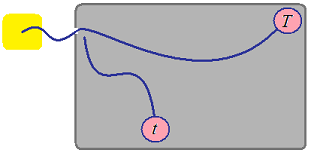
Model of repression ideal
Everyone needs healthy repressions in order to live a happy life. A healthy repression is a state where disagreeable judgments have been expressed, and associations are connected to an arbitrary and undefined object, a . Natural abreactions take place spontaneously and disagreeable judgments are expressed freely with emotion. There is no hypertrophy of mass of emotion in a hermetic state. The traumatic images have been clearly identified as very disagreeable images. The image of a trauma, t, is dried up like a dead leaf. But it’s only ideal.
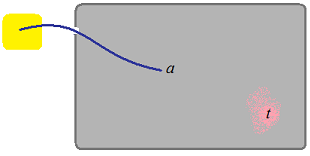
There are four types of awareness
(1) Awareness of indefinite repressed sensations
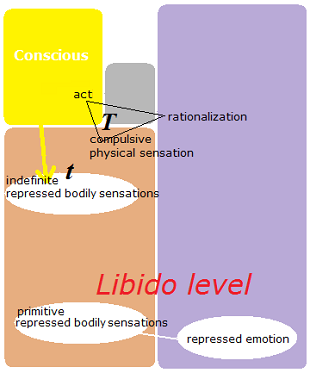
(2) Awareness of primitive repressed sensation, and (3) awareness of
recursive repressed sensations (anti-repression)
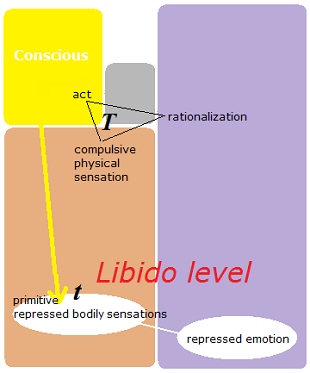
The lower layer of the method; (4) awareness of the repressed emotion behind the traumatic image. (Emotional catharsis)
